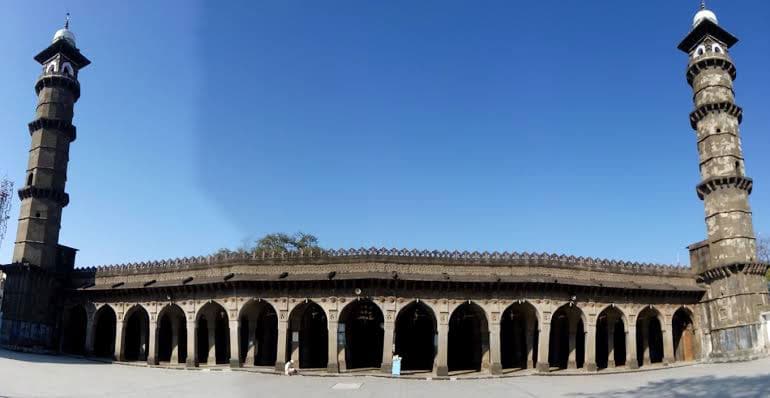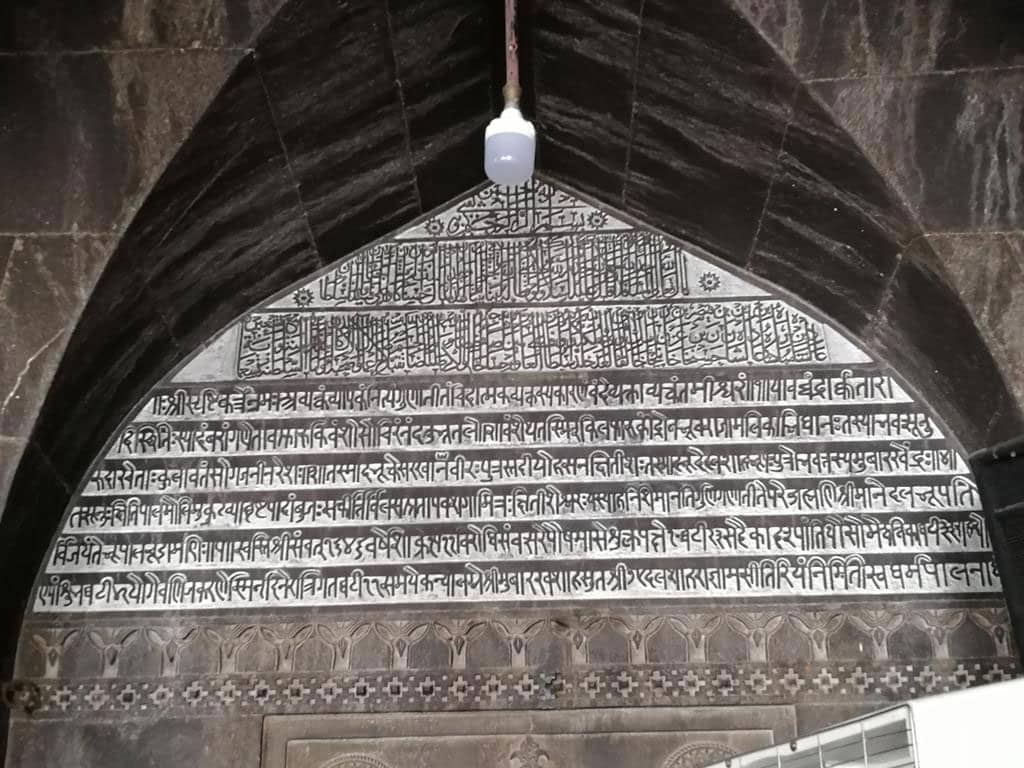The state of Madhya Pradesh records several eras of Indian history with its rich cultural heritage, music, and architecture. The region has been ruled by several kings including the great Ashoka, Chandragupta, Akbar, etc. This is the very reason why it exhibits several religions and beliefs in one place.
You would be amazed to know that this land of epic musicians as that of Tansen exhibits a phenomenal example of communal harmony.
A lesser-known city called Burhanpur which lies about 200 Km away from Indore harbors a mosque by the name Jama Masjid which has Arabic, Persian and Sanskrit inscriptions on its walls. Built by Raja Ali Khan in 1588, the mosque is the only one in India that has tri-lingual inscriptions.
The mosque

The roofless mosque has symmetrical arches forming ceilings. Its façade has 15 arches separated by two minarets. Black stones exported from Mandu have been used to build it.
There are 17 Mihrab niches in the mosque facing the direction of Mecca. One of the Mihrabs holds an Arabic inscription that mentions the patron in Arabic along with verses of the Quran that cite the year of construction. The calligrapher, Mustafa’s name is also seen inscribed.
Yet what catches all eyes is the south end of the prayer hall, where there are Sanskrit inscriptions that mention the astronomical position, date, and year according to the Hindu Samvat calendar.

Moreover, a little note in Persian by Akbar is also found in one of the walls. Akbar added the writing in 1601 on his arrival to Burhanpur. It was calligraphed by Mohammad Masoom after the conquest of hill fort Asirgadh.
As per records, the construction of Jama Masjid started in Farooqi rule and lasted very long even after Farooqi leader Adil Shah’s demise. Following this, Emperor Akbar supervised and completed the work of the Masjid.
First chosen site for Taj Mahal
The city was ruled by the Rashtrakuta Dynasty between the 8th and 9th centuries. Excavations of the Tapti River and Asirgarh Fort have revealed many coins, goddess idols, and temples from the prehistoric era. However, the city came to historic prominence only under the Mughal rule which started in the 14th century.
Burhanpur was ruled by the Faruqi dynasty followed by Akbar, Jahangir, Shah Jahan, and their successors during the Mughal rule. The city became the capital of Khandesh.
Shah Jahan spent a considerable amount of time here and helped add to the Shahi Qila. Shah Jahan’s wife Mumtaz took her last breath while giving birth to their fourteenth child in the bathtub of the Qila. She was initially buried in the city. It is said that they planned to build the Taj Mahal in Burhanpur but later on moved the site to Agra along with Mumtaz’s remains.
Do not forget to add this city to your travel list if you ever visit Madhya Pradesh.

